
The Business of Fashion
Agenda-setting intelligence, analysis and advice for the global fashion community.

Agenda-setting intelligence, analysis and advice for the global fashion community.
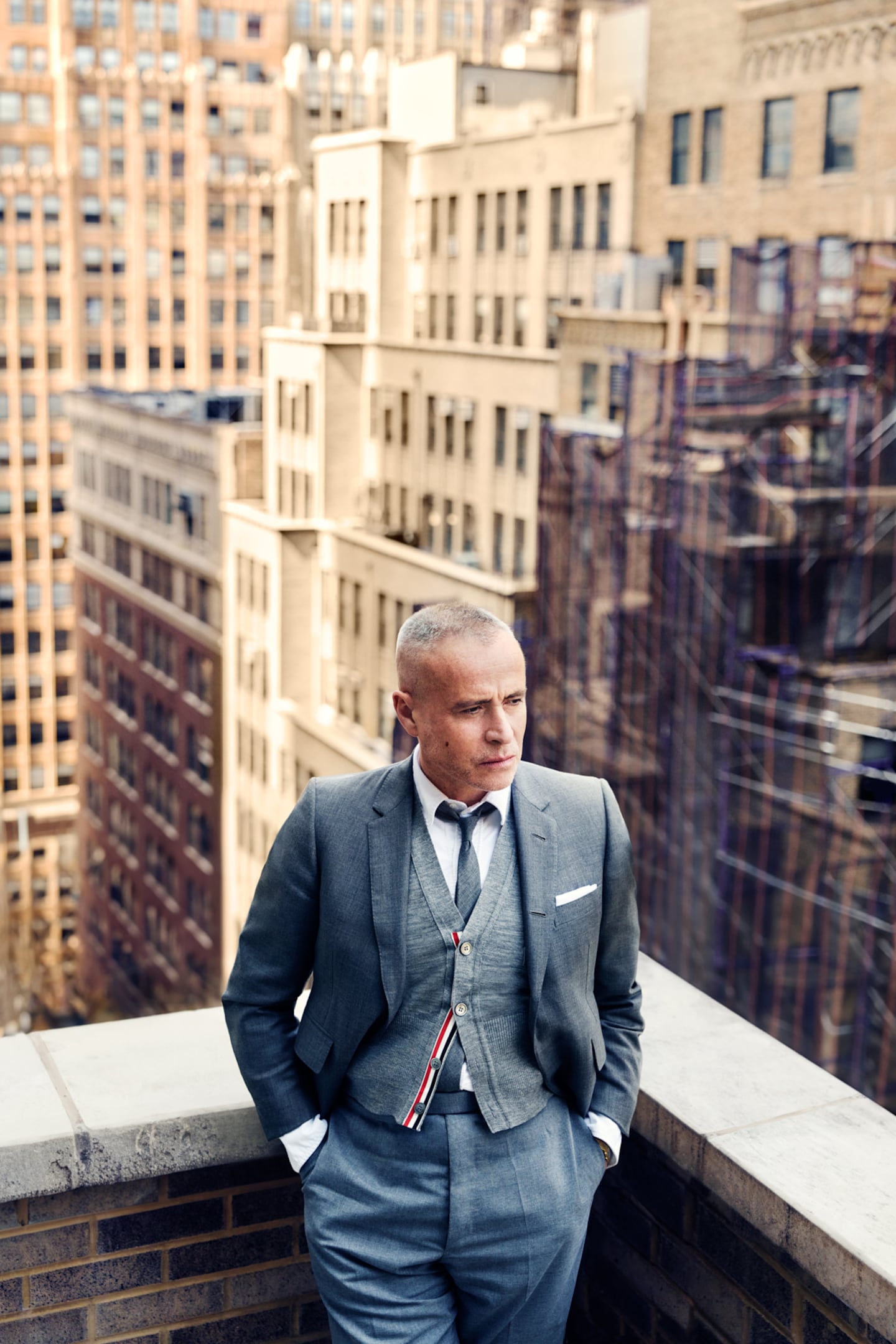
2023 is a year of milestones for Thom Browne. On the first day of January, his tenure as the new chairman of the Council of Fashion Designers of America began. In July, he presented his first haute couture collection in Paris. October sees the publication of a weighty monograph on Browne’s career. But above all, 2023 marks the 20th anniversary of his business.
“I started with something that nobody really liked, nobody thought was relevant and nobody could afford,” Browne reflects. “I wore the clothes myself in the city. Everybody laughed. So I kind of lived it and then it just became something that was interesting to people.” So interesting that, in 2018, Browne was able to sell 85 percent of his company to the Zegna group in a deal that valued Thom Browne Inc. at half a billion dollars.
In his introduction to the monograph, Andrew Bolton calls the early days of the label “a Warholian experiment merging art and business.” Like Warhol, Browne was able to convey his essence with one now-iconic image, in his case a grey flannel suit with a shrunken silhouette rather than a Campbell’s soup can. Bolton, who is Browne’s longtime partner, contributes a manifesto lyrically hymning the power of grey in art, in fashion, and, more specifically, in Browne’s grey-suited world where it is “filled with life, beauty, surprises, exhilaration and wonderment.” Bolton is also head curator at the Anna Wintour Costume Centre at the Metropolitan Museum in New York, and he curates the book almost as though it were an exhibition catalogue. More than 300 looks spanning the 20 years are forensically photographed and exhaustively detailed, reflecting the often painstaking work that went into them.
“Twenty pounds extra, a lot more grey hair and a lot older.” That’s what Browne says the book represents to him. Deflection is often his default position. “That book is Andrew. It was a luxury to have the best curator in the world curate the book. He always says designers are the worst at curating their own shows. So I was like, ‘Okay, here you go.’” The intricate web of intellectual import that Bolton weaves around “that darn grey suit,” as Browne calls it mock-ruefully, is fully in the vein of the some of the more overwrought analyses that Browne’s work has attracted over the years (guilty as charged), except that the designer himself insists, “I did want to create something so that when you thought of what I do you had an image in your head, so I guess it started with a grey suit. It’s the reason why we all live in it, but I didn’t over-intellectualise it. I thought it looked great. And it’s still where everything starts because I still think it looks great. And when I see all of us, I still feel this is the best thing that I’ve done.”
ADVERTISEMENT
He also believes the grey suit saved him in 2009 when his company was three days away from collapsing. “Doing that one thing almost ad nauseam drove people crazy, but it was my commitment to one idea, the grey suit, that was the reason why I didn’t go out of business, because people thought, ‘Well, at least he’s done something that we kind of know.’” At the time, everyone around him was advising him to declare bankruptcy and start over. “I remember thinking I just could never do this again if I had to start over. I also could not bear the thought of everything I did for those seven years going into some sale, or just liquidating.” With Miki Higasa, his right hand at the time, he hopped a plane to Tokyo where she knew a good customer who could perhaps help in the short term. In a day, he agreed to be Browne’s Japanese partner for a couple of years. “He didn’t ask any questions. He saw the value in it.”
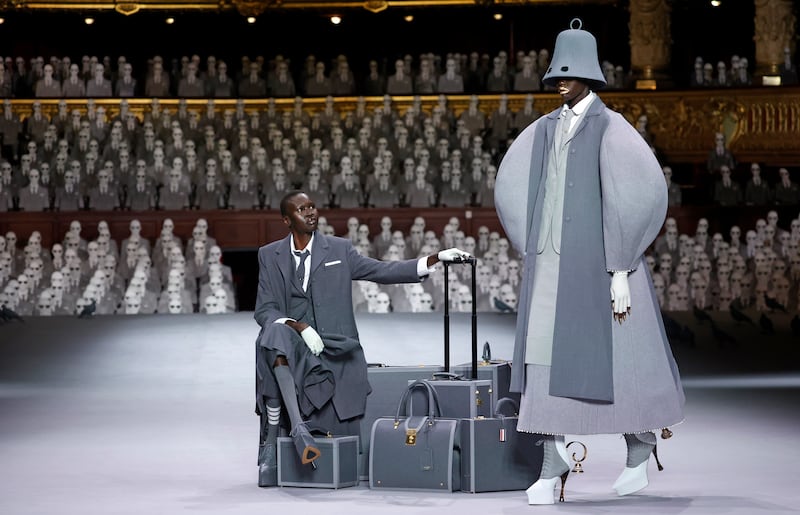
“I wasn’t a young kid, I just needed to figure this out and do anything possible to keep it going,” Browne says now, but even with the lucky break, it was a while before the business was out of the woods. In 2011, he added womenswear to what was previously only a men’s offering; in 2013 came more commercial pre-collections. “The business of that sustained more of the show collections. Then Rodrigo [Bazan, CEO since 2016] came and the business started really doing well.”
Browne saw July’s haute couture show as a consummation of his twenty years in fashion. “I wanted my interpretation of couture to be about what I think the fundamentals should be: the highest quality of what you can do, the highest construction of what you can do. And then bring my sensibility to those two.” But there was more. The clothes were produced half in New York, half in Paris. There is no one else supporting that level of craft in New York. “This is why I’m now the chairman of the CFDA,” says Browne. “And this is why it was so important to show in Paris because I am representing. It’s important for the world to see American designers doing things that are not just commercial, but are at the highest level in quality and construction and concept. Daniel’s at a French house but he is an American designer and I do feel that he is representing American fashion as well,” he says (Daniel being Mr Roseberry, toast of Paris for his work at Schiaparelli and the most famous alumnus of the School of Browne).
I suggest that, even aspiring to the highest standards of haute couture, it is hard to see how Browne’s craft — his mind-bending intarsias, for instance — could be any more elevated than we’ve already seen. “It wasn’t in a way, because we work with Shirishi and a small team in Japan that are just the best at this type of work. So the importance of the collection was to show what I’ve been doing for the last 20 years. I have been doing intarsia and trompe l’oeil for the last five or six years, and we do it in such a perfect way that we were just showing what we normally do.”
“I wanted people to see, too, that this wasn’t a one off idea. This was something that I’ve really always been committed to, but it was a more official recognition of it. And it’s not going away for me. We always felt with this 20th anniversary there’s still so much to do that it’s almost a restart. There’s only 2% of the world that can really buy what I do. It’s still very expensive.”
He has always insisted he knew very little about fashion before he started his business. “I just didn’t know that life existed. I was swimming when I was a kid. I was in a pool. And if I wasn’t in a pool, I was studying or doing school. And really through college, it was the same thing. Then I graduated, and I moved to New York and my eyes were opened to the fact there were amazing, creative people doing interesting things.” The unlikely soundtrack of Browne’s couture show captured that moment of revelation. “Visage, Erasure, the Communards, Jimmy Somerville, that sound was so inspiring to me. I feel like it was really the start of me becoming who I am.”
As Browne tells it, his ignorance was bliss. “It was very easy to do my own thing because I wasn’t crippled by knowing that much about fashion,” he says. “I just knew how I wanted to do it.”
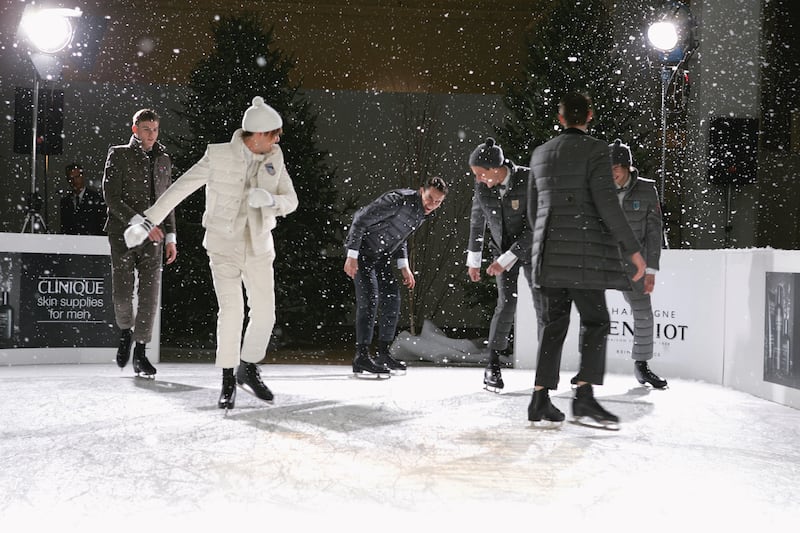
The last section of the book offers a rapturous visual diary of Browne’s presentations. It could be seen as a reflection of steadily escalating ambition, from the relatively humble ice skating rink of Autumn/Winter 2006′s menswear to the gilded grandeur of the Opera Garnier, where he staged Spring/Summer 2023′s womenswear (my personal favourite? The woodland scene he created for A/W 2014′s men’s show, complete with grey flannel bestiary), but, from the very beginning, he always dreamed the biggest dreams for his shows.
ADVERTISEMENT
“It’s so funny because the only shows I saw before I started my collection were a Christian Lacroix show and one of John [Galliano]’s shows for Dior in the early 2000s, where he came out of a golden carriage at the end. I thought, ‘I guess this is what you do when you do a show.’ I also thought it was in me too, because I loved that idea of creating the story.”
Reflection isn’t really his thing, but Browne admits even he is impressed when he looks at some of his show concepts, “especially back in the early days when I didn’t have that much money. Not to toot my own horn, but there were some twisted ideas that I think were really great. You know, the idea of putting guys in bonnets and tying them to an Amish house, and having them hammer it together while these things walked through the house.” The “things” he speaks of were the models wearing the new collection, sinister in their eyewear and their elongation, but the flourish that made the show — Autumn/Winter 2013 — memorable was the metronomic-bordering-on-infuriating hammering.
Browne has made an occasionally controversial habit of testing his audience’s patience with his intensely ritualised productions. “I think I do have a very specific way of how I want people to see what I do,” he acknowledges. “And I also have a very specific way of designing collections that I want people to recognize. So it’s the combination of the two. I love monotony, repetition… I like challenging the idea of living in such a fast world and slowing things down to almost an uncomfortable pace. I feel there’s so much time and effort and emotion that goes into creating a collection that I don’t understand why 30 minutes of everyone’s time is such a demand. I don’t think I’m boring, but I do feel like I am challenging you to maybe sit through something where there is some silence, there is some kind of monotony. To see nothing for a while. I think there’s something interesting about that. And it is part of the whole experience.”
In 2009, Browne introduced himself, his signature look and his brand of monotony to Europe at Pitti Uomo, the biannual menswear fair in Florence, by offering a Kafka-esque vision of a day in the life of a salaryman. Serried ranks of young men in their grey suits, grey cardigans and black brogues took their seats in a large anonymous office space, typed furiously for some minutes, then got up and left. The only sound the entire time was the clatter of their typewriters and the ping of their supervisor’s bell. I remember the confusion of people who didn’t know Browne’s work. Was this a piece of highly stylized performance art?
In one sense, the July show also placed his work in a new context, the world of haute couture, where not everyone in the audience may have been completely au fait with his 20-year career. He seated his invitees on the stage so that they were gazing out into the auditorium of the Palais Garnier where the seats were filled with reproductions of the same serried ranks of grey-suited men that staffed his “office” in Florence. An eerie audience from Browne’s past watching his new audience.
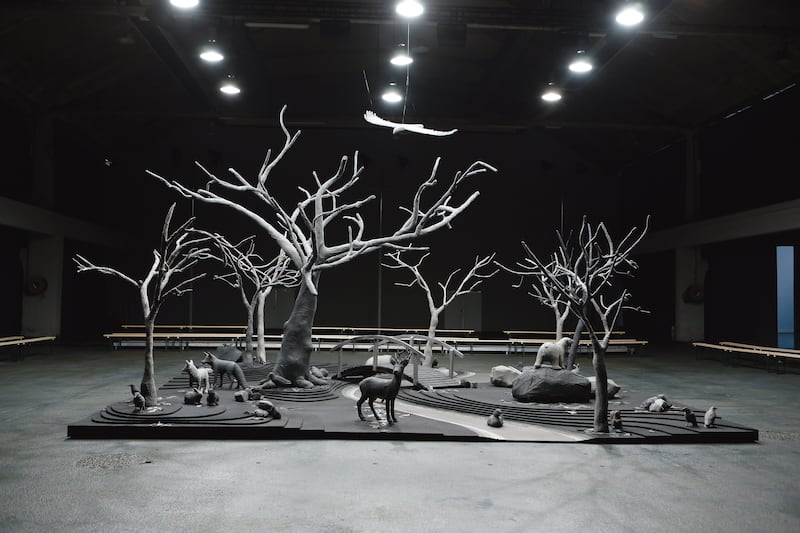
His original ambition was acting. “I wanted to be like Montgomery Clift.” He was serious about it. He chased the dream to LA, where he took classes, booked a few commercials, modelled a little. “I wanted to do well, but I guess I wasn’t so good.” He claims he’s never looked back but, when he compares the conceptualization of his fashion shows to directing a small story, I wonder if there isn’t some wish fulfilment at work. “No, it’s aspirational,” he counters, “in regards to seeing things in a heightened way. I like the experience of a show to be somewhat unrealistic. I don’t really think that you should be coming and seeing reality, because we live in reality, and it’s not so interesting sometimes.”
He concedes he also likes to make people feel uncomfortable. Monotony is one tool. His idiosyncratic approach to sexuality is another, the way he highlights body parts, jockstraps and bare asses disturbing the decorum of Spring 2023 in one recent exercise. “I like things that are inappropriate, I find them kind of funny.” And then there’s the morbidity. “Sometimes I think there’s a beauty in death and mourning, because it’s very unsettling to people.” With these threads, he can weave dark fairytales or febrile fantasias that veer from entrancing to ass-paralysing. “I’m just trying to show things in a different way,” he says.
And then there’s the perverse humour. You can laugh if you want to. Once upon a time, Browne told me he didn’t care if people did that at his shows. He also accepted that people were liable to over-intellectualise (again, guilty as charged). But he has never got into the habit of self-justification, which is not surprising because the source of his own discomfort is confrontation. “A little mystery is good,” he says cryptically. “Once you know the entire story, it’s not always so interesting. And I do like it when people make their own interpretations.”
ADVERTISEMENT
He never expected everyone to like what he does. “I would prefer that not everybody does. Because I think that if you’re doing something that’s interesting enough, you’re gonna piss half the people off. I think that’s what we should be doing. And I feel like I need to push it even further as the chairman of the CFDA because I have to show people that you need to start pushing, especially in America. I’m not being easy on the next generation because I think they have to really step it up. And they also have to put the work in, to want to create something that’s lasting.”
What did Tom Ford, his predecessor in the CFDA role, tell Browne about the job? “Please, please do it,” he says, with a laugh. He agreed, “because I’ve gotten so much from the fashion business, I thought this is my way of paying it back.” Browne places great store in leading by example in his duties as chairman. “I do feel you have to own your successes and your failures. It is just common sense. You know, if you want to do this and if you want to be around for a long time, you have to have something that will sustain you. And you’re not gonna sustain yourself with three legged trousers. it’s just not gonna happen. But a nice well-made two legged trouser could sustain you.”
He is speaking to the future of American fashion — though he could equally be talking about himself — when he says, “It’s the designer’s responsibility to create things that are worthy of existence. Something that’s beautifully made and interesting will always have value and there will always be a business for that. Do we have to see the same houses just using designers and spitting them out? We need that next generation of independent designers, because a hundred years ago there were independent designers that are still the names everyone cares about. Wouldn’t it be nice fifty years from now if we have ten from this generation?”
“There’s a lot happening in New York,” Browne continues, “and I want to make sure that it is embraced and it lasts. I’m hoping with all the new designers here that they don’t get pushed into being too commercial too early because I think that’s the reason why they don’t survive. If they stay as creative as possible, as long as possible to create an image for themselves and a reason for their identity, I think that’s a good key to success. I really only know what I have done.”
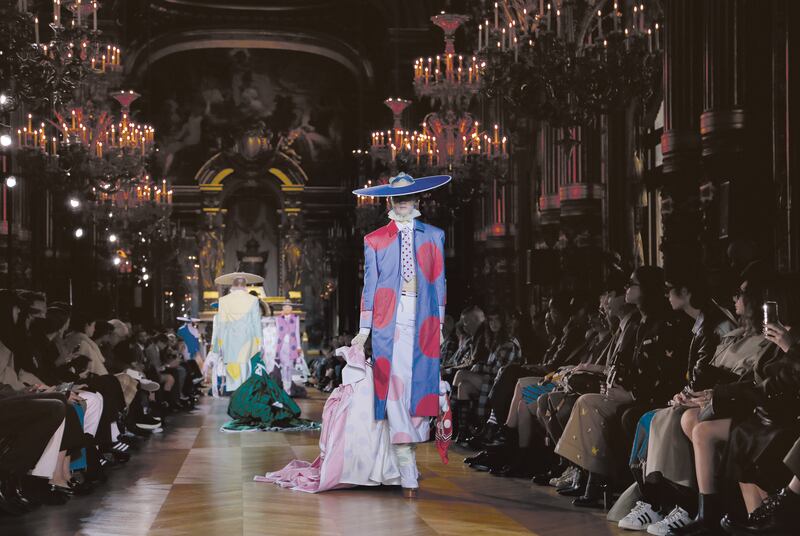
“Unfortunately, they see the money too quickly,” he adds. “And they don’t realise it’s been a long 20 years. And it’s been a lot of my personal investment, everything I’ve had has gone into it. And look, I’m very fortunate, it worked out, but there’s no guarantee it will. So you have to gauge success in just being able to do something you really love and doing it really well. And it can’t be fame and money. It really comes down to the work, being important enough for you to still stay with it.”
After Zegna’s eye-popping valuation, he now envisages his business being worth more than a billion. “I don’t think in terms of dollars,” he says. “But I do think in terms of more people being able to know what I do and buy what I do. Women’s is not new anymore, but it’s still not as known as men’s. And the kids’ collection is fun.” Browne sees his entirely ungendered couture show as a blueprint for the future. “I’m not really designing men’s and women’s collections anymore. They’re developed together. It’s really just clothing that can be worn by either a man or a woman. With some alterations.”
He turned 58 in September. He says he finds great wealth odd. “I’m still that poor actor that had $20 and ate Kentucky Fried Chicken nuggets for dinner and got the large carton of coleslaw to fill me up,” he insists. “I don’t think you ever lose that.” By his own account, he and Bolton lead a very simple life in their very fine townhouse in New York City. They have a dime jar in the kitchen for petty cash. And I don’t think he’s kidding. “I’m new to owning a house. It’s like those times that you wish your parents were still around because my parents never saw me with that.”
Nor did they see their middle child (of seven) win recognition from the august-sounding Friends of the Upper East Side Historic Districts for the years-long renovation. There is little Browne likes more than sitting in his backyard gazing across the greensward to the East River. “I don’t need a lot to be content,” he says. “I could sit on our terrace and I could look out and not do very much… and drool.” A chuckle. I remember how important running used to be to him. “I can still run as much but I almost don’t care about it as much. You get to a point where you’re saying I don’t feel like trying so hard anymore.”
The couple have bought an 18th century Irish Georgian house upstate. They have visions of Brideshead, but he also fancies herds of cows. “I would love to have a working farm,” he muses. This master of the unforgettable image leaves me with one last vision: Thom Browne, Gentleman Farmer.
The Zegna-owned brand seeks to double sales to over $500 million from $230 million in 2021 while maintaining its insider cachet. CEO Rodrigo Bazan sees opening intimate boutiques in offbeat locations as a path to keep growing in a luxury market dominated by European giants.
Ermenegildo Zegna Group paid a hefty sum to acquire 85 percent of the American fashion label, but the price tag comes with new opportunities and synergies for the Italian company.
BoF sits down with Thom Browne to discuss his professional journey, his conceptual-meets-commercial balancing act and his company's expansion plans.
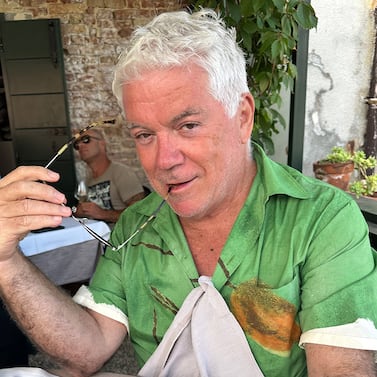
Tim Blanks is Editor-at-Large at The Business of Fashion. He is based in London and covers designers, fashion weeks and fashion’s creative class.
Mining company Anglo American is considering offloading its storied diamond unit. It won’t be an easy sell.
The deal is expected to help tip the company into profit for the first time and has got some speculating whether Beckham may one day eclipse her husband in money-making potential.
The designer has always been an arch perfectionist, a quality that has been central to his success but which clashes with the demands on creative directors today, writes Imran Amed.
This week, Prada and Miu Miu reported strong sales as LVMH slowed and Kering retreated sharply. In fashion’s so-called “quiet luxury” moment, consumers may care less about whether products have logos and more about what those logos stand for.